#Langstroth
Explore tagged Tumblr posts
Text

Still here!
#bees#beekeeper#beekeeping#fox#talks#honeybee#honeybees#honeycomb#honey#bee#hive#hives#long langstroth#langstroth#window#windows#access#door#natural#nature#bug#bugs#insect#insects
44 notes
·
View notes
Text
Lorenzo Langstroth unvarnished

Lorenzo Langstroth, 1890. From Langstroth on the hive & honey bee, rev. by Dadant. 1892.
December 25th, Christmas Day, is a day for sharing and giving. It also happens to be the birthday of a man known as the father of American beekeeping: Lorenzo Langstroth, born Philadelphia, Pennsylvania in 1810. With both happy occasions in mind, Mann Library is pleased to announce a resource that we’re pretty sure students of beekeeping and its history will find a wonderful gift: a fully digitized, searchable copy of Langstroth’s handwritten personal journal. Where a researcher would have once had to make an in-person trip to our special collections reading room to attempt a deciphering of Langstroth’s (infamously difficult to read) handwriting, the journal is now freely available (and actually readable!) as both a digitized version of the original work and in a transcribed form as part of the online Biodiversity Heritage Library.
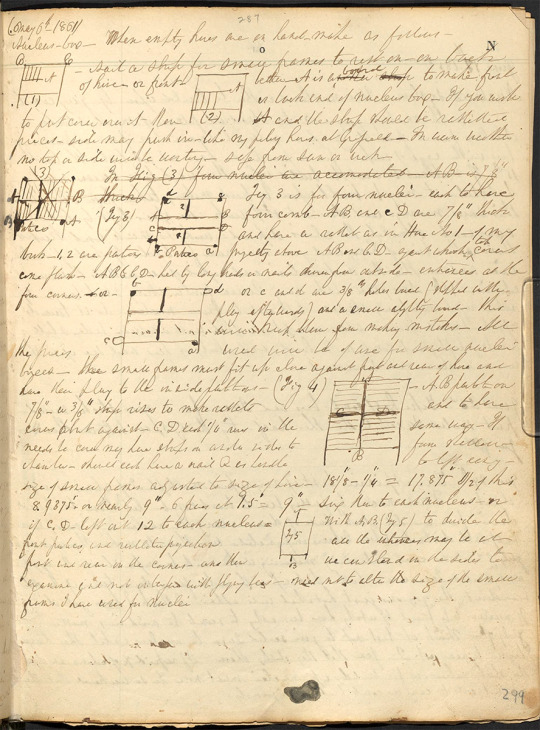
Page from "Journal on matters relating to bees, etc.," unpublished manuscript, Lorenzo Langstroth 1852-1895. in the special collections of Albert R. Mann Library, Cornell University.
For those not yet fully in the know, Lorenzo Langstroth looms large in American beekeeping history thanks to discoveries and inventions he made as a self-taught apiarist, innovations which essentially revolutionized the 19th century practice of beekeeping in North America and facilitated its development into the profitable industry of today. His guide on beekeeping, The Hive and the Honeybee, was first published in 1853 and remains in print even today. Langstroth’s story is also poignantly notable for a reason that you don’t have to a be a beekeeper to appreciate deeply: his struggles with debilitating depression, which stymied many of his professional endeavors. While working intermittently as a pastor and teacher when his mental health allowed, Langstroth found constant, life-affirming inspiration in the bee world he observed closely through the prism of the hives he kept for most of his adult life.
The history of beekeeping stretches back to prehistoric times, but when Langstroth patented his movable frame beehive in 1852 it created a worldwide revolution in the practice of keeping bees. On this page of his journal, we see the exact moment—the “aha” moment—that Langstroth landed on his brilliant insight: the significance of applying the concept of "beespace" to design hives that allow easier harvesting of honey than possible in earlier hive structures. The rest, as they say, is history.
The journal Langstroth kept is a treasure for several reasons. It provides fascinating insight into pivotal moments of beekeeping’s technological history. It is, as well, an intimate view of resilience in face of sometimes devastating mental health challenges. And last but really not least, in the comments and pet peeves that Langstroth also recorded in his ongoing notes-to-self, his off-the-record writing offers a more mundane but no less instructive tour through the day-to-day concerns—from keeping bee hives productive to the vexing challenges of protecting trade secrets and securing patents for promising new discoveries in a timely way—that would have been top-of-mind for any aspiring agricultural entrepreneur of the 19th century.
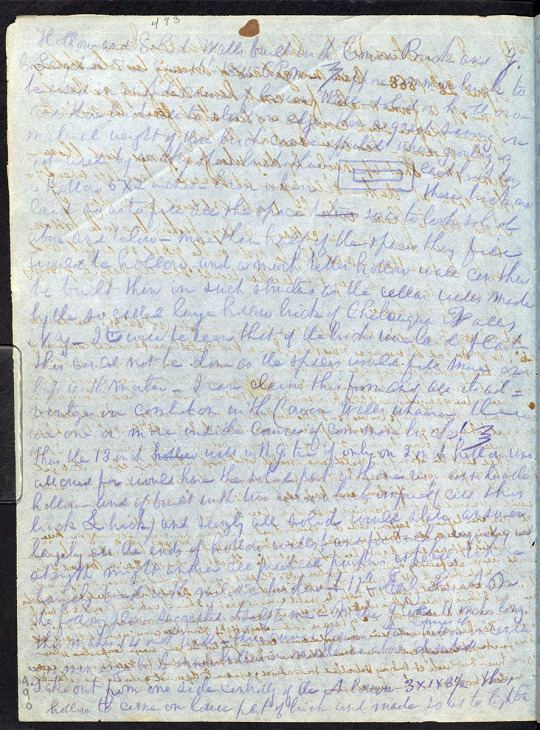
Page from "Journal on matters relating to bees, etc.," unpublished manuscript, Lorenzo Langstroth 1852-1895. in the special collections of Albert R. Mann Library, Cornell University.
The online availability of Langstroth’s journal in both its handwritten and transcribed form has been a work very long in the making. When early 20th century entomologist Everett Franklin Phillipps joined the Cornell faculty 1924, he made it his mission to establish one of the world’s most important collections of beekeeping materials—now known as the E. F. Phillips Collection at Mann Library. Recognizing the importance of one of this collections’ gems—the Langstroth journal—for the beekeeping field, Phillips began the painstaking process of transcribing 600 pages of its cramped, highly slanted script—rendered even more illegible by the frequent ink bleed-through from other pages—into easily readable typescript. The project remained unfinished at the time of Phillips passing in 1951, and others took up the work intermittently over the following decades. But it wasn’t until the epic pandemic-era national lockdown of 2020 that intrepid collections specialist Betsy Elswit finally found herself with the time needed to finish transcribing of the journal's final 200 pages. Thanks to this heroic work, a browse through the work on the Biodiversity Diversity Heritage Library today provides a look at Langstroth’s original writing with a side-by-side view of transcribed, machine-readable text. Thank you Betsy! And thank you, Reverend Langstroth, for persevering through the inspirational highs and deep lows of life to impact the practice of beekeeping so profoundly, and to leave us such a rich record of such remarkable scientific observation and personal achievement.
And with that, we leave you with our best wishes for a good, hope-filled winter holiday season!
#Langstroth#beekeeping#beekeeper#apiculture#mann library#cornell university#rare books#vintage book#archives#mental health#agricultural history#special collections#bees#honey#apiary#honey bees
13 notes
·
View notes
Note
🪄what is your post-writing/sharing aftercare? How do you take care of yourself or celebrate yourself when you've finished a fic?
🧿what steps do you take to not take things personally if a fic doesn't do well, or if your writing/posting/sharing experience isn't going how you'd like it to?
💌share something with us about an up-and-coming work (WIP) that has you excited!
Thank you for the questions!
🪄what is your post-writing/sharing aftercare? How do you take care of yourself or celebrate yourself when you've finished a fic?
1) Post to Write Every Day that I published a thing! Then the host (and sometimes others) do a celebratory dance with me, yay!
2) Ditto the friends who held my hand while I was writing and/or workshopping all the necessary meta-info. They all congratulate me, yay!
3) Tell my wife I published the thing. She congratulates me, yay!
4) Remind myself that the rest of the fandom is asleep or at work (or has never heard of me, or straight-up doesn't exist), and go find something else to do, preferably not online: Go for a walk. Read a book. Hang out with my wife. Art. Piano. Cook. TV. Sleep. Anything that qualifies as "moving on with my life", "having other interests", "being a well-rounded individual", "getting happiness from more than one place," etc.
5) If, at some point, I find myself fretting over whether people like my story (almost inevitable!), or if I'm still waiting for my regular commenters to show up, I pull out a different WIP and work on that. After all, the main reason I write stories is because I really enjoy writing stories. Sure, I also really like getting comments! But I have no control over those: they come when they come, if they come at all. But I do have control over whether I'm writing a story or not! And I really enjoy writing stories.
🧿what steps do you take to not take things personally if a fic doesn't do well, or if your writing/posting/sharing experience isn't going how you'd like it to?
So, the thing about my main fandoms being a half-dozen people each, is that I no longer have a decent frame of reference for how many comments a work "ought" to get. There's two-to-three people who I can count on to comment on every story (blessings on your houses!) and after that, every comment is a bolt out of the blue. Unlooked for. Gravy. I had no idea you were even IN this fandom, welcome, are you just passing through? So generally speaking, it's pretty hard for a story to underperform my expectations anymore.
Where I do get into trouble, though, is when I write for an exchange, and then the recipient does not comment. (It's a customized work! To your letter and tastes, as much as I could divine them! Even if I missed the mark, I would still like my good faith effort acknowledged. Were you never taught to write a thank you note?) When that happens, I go to my fandom confidantes and dramatically catastrophize about how OBVIOUSLY my recipient HATES my story. For the first few days, my confidante usually pats me on the head, tells me I'm being a silly, and helps distract me with something fun. But should we get to the end of the anon period and my recip still hasn't commented, usually my confidante gets protectively judgey on my behalf, especially if it proves the recip has a history of this kind of thing. Which doesn't cut the disappointment, but does help me externalize it.
💌share something with us about an up-and-coming work (WIP) that has you excited!
The one I'm REALLY excited about right now I can't share, because it's for an anonymous exchange.
But that said, I am really really wanting to get Langstroth on Bees out into the world. (Eleven years and counting!) I want you all to read it so bad! Here's a scene from the chapter I'm rewriting:
I heard a few quick steps inside. The door opened.
He was in disguise. I had not expected that, although the false name should have tipped me off. A black goatee disfigured his chin. His hair, too, was altered, waving loose over his forehead instead of pomaded back. But, oh, his eyes! His eyes, quick and intent, were just the same.
"Come in," he urged, motioning me past. He put his head into the corridor, quickly glancing right and left. Then he shut the door and put his back to it.
We stood there, with the space of two years between us.
He had lost weight; I was grieved to see that. The last two years had worked him hard: there was a gauntness to his cheek that had not been there before. He had aged, as well; it rent my heart to see the evidence of the time we had been apart, there in the lines around his eyes, the creases framing his mouth, the softness of his jaw. But he was still beautiful. Even with that regrettable goatee, he was still beautiful.
His eyes ran over me in turn, no doubt plucking the history of my own last two years from me. Undoubtedly he would know the details of today's drive: the haste with which I had locked the cottage behind me and the names of the towns where I had stopped for petrol. What birds I had seen, what people I had spoken to. I wanted to laugh with the giddy, ridiculous absurdity of it.
"Sherlock," I said, having no other words for the fullness of feeling in me -- the wonder of it, and the strangeness, too. He was too dear and familiar to ever be a stranger to me. And yet stranger he had become. But not for long -- no, no, not for long. But as I stepped forward, he stopped me with a raised hand.
13 notes
·
View notes
Link
Lorenzo Lorraine Langstroth was an American apiarist, clergyman, and teacher, who has been called the father of American beekeeping. He recognized the concept o...
Link: L. L. Langstroth
0 notes
Text
Honey coming in full force into the farm
Honey coming in full force into the farm
youtube
#ReefDVMs#RMSpeltz Farm#Bee#bee hive#cover#super#brood box#queen excluder#base#bee keeping#inner cover#bee hive education#langstroth hive#langstroth box#italian bees#dij camera#bee hive parts#understanding bee hive#learning bees#best hive box#best bees#best hive#hive brush#bee hive brush#hive smoker#bee tool#bee hive tool#beginners beekeeping#beekeeping#basic beekeeping
0 notes
Text

He's been cooking at the Langstroth for longer than this kid's breathed. He knows her as the P.I's daughter well before he clocks the notebook or the scars; it's happening again.

You may have ☝️ comic panel. This was meant to be a short exercise in food and perspective shots but alas, famous last words. I'm pleased with the result though 👀 It didn't take anywhere as long as I thought it would
#krok.png#Original Character#OC#Comic Art#Comic#OC Artwork#OC: Harper#Can't be normal for five minutes apparently#Zoomed in at 500% doing bits of cheese for no good reason#Derangement.#It's nice to reference story lines I've had in the pipelines since ye olde format though#I be cooking 👀#Skeinridge
10 notes
·
View notes
Text

[ Image description: photograph of a device on a hotel breakfast counter. The device is holding a single Langstroth (I think?) frame of honeycomb in an upright position within a glass frame. There is a spout with a wood-handled ball valve in front, and a bowl underneath the spout to capture drips, which is partially filled with golden honey. The frame has no foundation installed, and the comb itself is dark brown and only partially uncapped. A small attached sign reads “Miel - honey”. End ID. ]
I am in Costa Rica on a student tour. In our hotel, there is this thing: I am pretty sure this is a honey subscription service with the Linda Vista Farm (and Apiary, obviously).
Costa Roca is very much into sustainability and eco-tourism, and it shows: to me, this display is perfect, and captures so much information about it in one compact package:
1) The lack of foundation: I think there are wires in their for support, but these bees are not being encouraged to build on foundation. They can do their own thing; imo this is good. Plus, the support that a beekeeper might need to provide if they’re going to extract the honey by spinning the frames is not needed here. You can see the beeways that the bees have built for themselves to transit between combs, which is neat.
2) The color of the wax: fresh wax is light gold in color, so this dark brown wax is old. These frames are being reused, which totally makes sense for a subscription service for this dispenser, and if that’s what they’re doing, I suspect that you just turn in an empty frame for a full one (or maybe you get a whole hive body of 10 frames). The benefit of this for the bees is that they don’t have to rebuild the frames (making wax is metabolically expensive). Cons, though, could be that diseases might be transmitted this way, especially if the frame goes into a different colony’s hive.
3) Most of the cells were uncapped. I think that the hotel staff uncaps sections of the comb as needed, rather than the whole thing at once, which I think would flood the device.
It’s just absolutely brilliant; I cannot stop thinking about it.
If you’re a beekeeper, especially if you’re from Costa Rica and/or know more about La Granja Linda Vista, please reblog and add your thoughts!
2 notes
·
View notes
Text
The Buzz on Honey Bees and Their Business
The Buzz on Honey Bees and Their Business: Selling Honey Equipment Online
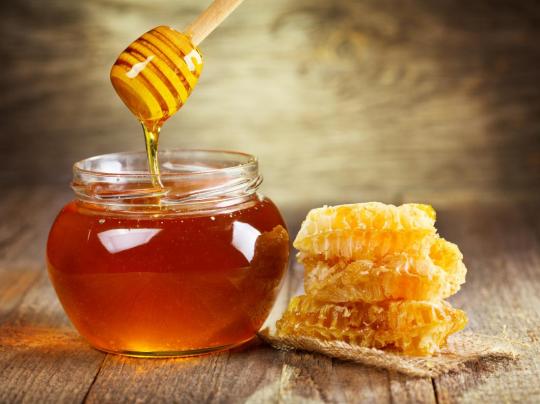
The honey bee, a small insect with a vital role in our ecosystem, has increasingly become the center of attention not just for its environmental significance, but for its burgeoning business opportunities. If you're passionate about honey bees and want to delve into the world of honey-making, then the online market has a plethora of equipment and tools to get you started. From essential beekeeping supplies to those crucial finishing touches like heat shrink bands for jars and bottles, you're just a click away from starting your honey business.
Understanding the Honey Bee Business
Before diving into the types of equipment you can sell online, it's crucial to understand the honey bee business. As these industrious creatures collect nectar, they produce honey—a sweet, golden liquid loved by many. But turning that liquid gold into a market-ready product requires specific tools and techniques.
Essential Equipment for Honey Extraction
Beehives: The primary home for your honey bees. They come in various styles, but the most common are the Langstroth and Top-bar hives.
Bee Suits: These protective suits ensure beekeepers can handle their bees without the risk of stings.
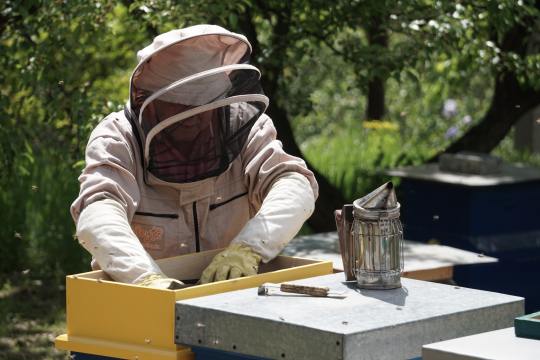
Smokers: Used to calm bees during hive inspections.
Honey Extractors: A device that spins frames, extracting honey without damaging the honeycombs.
Perfecting the Packaging Process
Once you've successfully harvested your honey, the next step is packaging. This is where details like shrink wrap bands for jars come in.
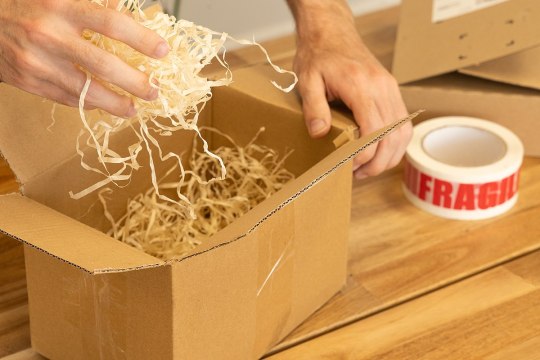
Glass Jars and Bottles: When we muse about honey, the quintessential, timeless packaging we think of? That's right. Glass. They stretch across the spectrum in sizes, some tiny like a delicate thimble, others hefty, holding treasures of amber nectar. Shapes? Oh, they dance from conventional rounds to eclectic hexagons. Catering to the ever-evolving market, they stand resolute, each telling its tale.
Heat Shrink Bands for Jars and Bottles: You've seen heat shrink bands for bottles. Perhaps, without much thought. But, ever think of the genius behind these slender bands? Once dormant, with a hint of heat, they snap into action. Hugging your bottle or jar's neck, they promise safety, scream professionalism. Tamper? Think twice. These heat shrink bands for jars are guardians; their mere presence a challenge to any foul play.

Labels: Imagine walking through an aisle, and a myriad of jars beckon. What makes you pause, tilt your head and reach out? Often, it’s that piece of art draped around the bottle: The label. More than just a sticky piece of paper, it’s a canvas that whispers tales of the golden liquid within. And more than that, it often sings songs of the brand's ethos, legacy, and promises.
Selling Equipment Online:
Fancy a dive into the lucrative world of online honey-equipment sales? A realm awaits. You see, the beekeeper's world isn’t just filled with buzzing. Be it the newbie next door or the seasoned pro from the valley, they’re all scouring for top-notch gear. And while the basics hold their ground, why not sprinkle your inventory with diverse, vibrant heat shrink bands? Every hue, every size. And, to spice things up, keep an eye on the beekeeping vogue. Evolve, adapt, and stay a buzz ahead.
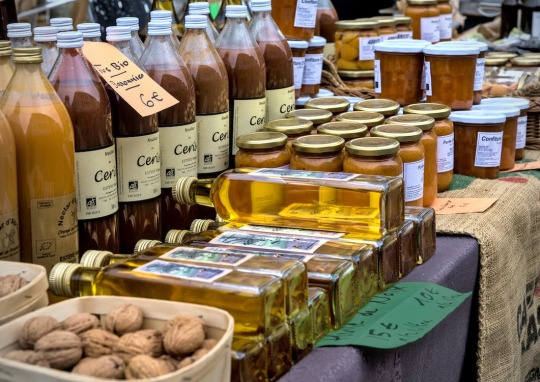
Conclusion:
It’s not just about the hum and the honey. The bee business? It’s a tapestry. Threads of art, science, and commerce intertwining. And as for success? Well, get the gear right. Whether it’s a state-of-the-art extractor or a humble heat shrink band, every cog matters. The golden road to triumph? Just around the corner.
Here's to the art of beekeeping and the sweet symphony it brings! Cheers!
2 notes
·
View notes
Text
Beekeeping: An Introduction to the Art and Science of Beekeeping
Introduction:
Beekeeping, also known as apiculture, is an ancient practice that involves the management and care of honeybees for their valuable products and services. It is an art, a science, and a rewarding hobby that has captivated humans for centuries. This article serves as an introduction to the captivating world of beekeeping, exploring its historical significance, the fascinating life of honeybees, and the basic components of starting a beekeeping venture.

Historical Significance:
Beekeeping has a rich and storied history that dates back thousands of years. Ancient civilizations, such as the Egyptians, Greeks, and Romans, recognized the importance of bees and their honey. Honey was not only a prized sweetener but also held symbolic, medicinal, and culinary value. Throughout history, beekeeping methods and techniques have evolved, and different cultures have contributed their knowledge and practices to this timeless tradition.
The Life of Honeybees:
To understand beekeeping, it is essential to delve into the intricate lives of honeybees. Honeybees live in highly organized and complex social structures within their colonies. Each colony consists of a queen bee, worker bees, and male drones. The queen is responsible for laying eggs, while the female worker bees perform various tasks, such as foraging for nectar and pollen, nursing the brood, and building and maintaining the hive. The male drones' primary role is to mate with a queen from another colony.
Honeybees' remarkable ability to communicate through a dance-like movement known as the "waggle dance" is fascinating. This dance conveys information about the location and quality of food sources, enabling other worker bees to navigate and collect nectar and pollen efficiently.
Starting a Beekeeping Venture:
Embarking on a beekeeping journey requires careful planning, knowledge, and dedication. Here are some basic components to consider when starting a beekeeping venture:
Research and Education: Begin by educating yourself about honeybees, their behavior, and the fundamentals of beekeeping. Read books, attend workshops, and seek guidance from experienced beekeepers. Local beekeeping associations and online resources can provide valuable information to help you get started.
Hive Selection and Equipment: Choose the appropriate type of beehive for your needs. Common types include Langstroth, Top Bar, and Warre hives. Acquire essential equipment such as hive bodies, frames, foundation sheets, a smoker, a beekeeping suit, gloves, and hive tools.
Bee Colony Acquisition: Obtain bees for your hive. You can purchase a package of bees, which includes a queen and worker bees, or acquire a nucleus colony (nuc) consisting of a small, established bee colony with a queen.
Hive Placement and Management: Select a suitable location for your beehive, considering factors such as sunlight, shelter from the wind, and a water source nearby. Regular hive inspections and management tasks, such as monitoring for diseases, pests, and ensuring a sufficient supply of food, are essential for maintaining healthy colonies.
Safety and Beekeeping Practices: Beekeeping requires proper safety precautions. Be familiar with bee stings and allergy management. Wear protective gear when working with bees, and handle the bees with care and respect. Follow sustainable and ethical beekeeping practices, including avoiding unnecessary pesticide use near the hive and promoting biodiversity by providing a variety of forage sources.
#Beekeeping#Apiculture#Honeybees#Beekeepers#Beehive#HoneyProduction#Pollination#BeekeepingHistory#BeeColony#BeekeepingEquipment#HiveManagement#BeekeepingEducation#BeekeepingJourney#StartingBeekeeping#BeekeepingTips#BeekeepingBeginners#BeekeepingBenefits#BeekeepingPractices#SustainableBeekeeping#BeekeepingCommunity#BeekeepingResources#BeekeepingGuide
2 notes
·
View notes
Text
Gonna add onto this as a beekeper myself.
ehh, i'd say you can abuse honey bees with harmful beekeeping practices. But they also WILL LEAVE if they want to. (them doing so is called absconding)
i do not have any sources other than my personal opinion, experience, and gathered knowledge from various in person lectures from beekeepers with doctorates over the last couple years.
You can be neglectful and harmful to your beehives. Many beekeepers rob as much honey as they can from their hives, resulting in increased losses of colonies. And you the beeekeeper going inside their hive to inspect is a pretty large stressor on that colony. You want to be as quick as you can and as careful as you can to minimize the stress you are inflicting. (how would you like it if someone tore apart your house, rearranged it, left your walls unsealed and with drafts, killed several if not dozens of your housemates in the process of putting the house back together, and then you were stuck with the repair bill? not happy i presume.)
The majority of beekeeping research is aimed to maximise honey production, not quality of honey bees. and even then the quality of a queen is typically not judged on her survival, but in fact how much honey her colony produces, how "productive" her colony is. Swarming is discouraged because A it leaves the mother hive vulnerable to collapsing if the new queen is eaten while on a mating flight, but MAINLY for B, the loss of honey production durring the spring nectar flows because of reduced workforce.
Thats not to start on how the breeding for maximized honey production has likely led to increased vulnerability to varroa mites, or how the thermodynamics of a Langstroth hive set up is actually really un-beneficial to the bees.
As much as the bee movie got wrong, big time commercial beekeepers robbing honeybees to their detriment was the one of the very very few things it got right.
But its not the scientists doing this research's fault. They have to apply for grants and give a reason for why the research is being done. And if they dont appeal to those giving them the money, they cant do large scale professional research.
Anyway. it is a very nuanced topic. There is no strict yes or no answer.
(PS. if the honey that you are buying does not say raw honey, it has likely been either adulterated [made from feeding honeybeess sugar water, or actually cut with something like corn syrup], or has been processed in a way that ends up removing all the benefits of honey. the best honey to buy is honey from a local source and ideally one that you know the beekeeping practices of!)
Wild that folks keep saying beekeepers abuse bees as if bees are not both venomous flying animals and fully unionized
#beekeeping#honeybees#actually a beekeeper#not an expert#but i do keep myself educated and currently have some hives#THAT HAVEN'T DIED OUT!#:D#something really amazing since beekeepers have had 70% colony losses this year
164K notes
·
View notes
Text
Hurrah! I have finished Langstroth on Bees! 80K words in 11 chapters!
...or I would have finished Langstroth on Bees, had it not decided it needed an epilogue.
*glowers, mutters, mumbles*
And of course I haven't the least idea where the epilogue is coming from. No doubt this means I shall have to do more research.
*glowers, mutters, and mumbles some more*
32 notes
·
View notes
Text
Beehive parts by Tabitha
What to learn the parts of hive, Tabitha will show you
youtube
#hive, #beehive#beekeeping
#ReefDVMs#RMSpeltz Farm#Bee#bee hive#cover#super#brood box#queen excluder#base#bee keeping#inner cover#bee hive education#langstroth hive#langstroth box#italian bees#dij camera#bee hive parts#understanding bee hive#learning bees#best hive box#best bees#best hive#hive brush#bee hive brush#hive smoker#bee tool#bee hive tool#beginners beekeeping#beekeeping#basic beekeeping
1 note
·
View note
Text
There are literally giant bee farming companies that feed their bees Mountain Dew when flowers are out of season
Can you imagine expecting ANY animal to survive off of Mountain Dew and think that that's okay
These companies also keep their beehives all in one place, and the hives are all the same. Bees need their hives to be differently colored or shaped or placed, so they can identify which hive they live in. Keeping them so close together confuses the bees, which causes population drift, which helps spread disease and parasites
These hives are also generally an inferior version Langstroth hives, which were originally designed to give the bees sufficient space and insulation, but which the mass-produced, basically-made-of-plywood modern versions do not. The bees living in these conditions are often killed by cold, and also by being transported throughout the year to different monocrop farms.
The beekeepers treat mass murdering and then replacing at least half their bees every year as a regular business expense
vegans making honey a bee labour issue is the funniest thing imaginable because like, you picked the one animal that has already unionised
139K notes
·
View notes
Text

The bug yard needs a little grass cutting but is otherwise good to go. The wrapped top bar hive in the center is occupied. The Langstroth hive is ready for move-in and I have another top bar one that needs paint before I put it out there.
That black tub with the yellow lid is a black soldier fly larva composter. The larvae climb the inside of it and drop out holes that I drilled along the upper edge. They fall into the grass next to it and burrow into the ground to pupate, if a duck doesn't get them first. The ducks love it.
0 notes
Text
Everything You Need to Know About Honey Bee Hives for Sale
Beekeeping is an incredibly rewarding hobby and a vital part of pollination for gardens, orchards, and crops. Whether you are a beginner or an experienced beekeeper, acquiring high-quality hives is essential for a thriving colony. If you’re searching for honey bee hives for sale, you’re in the right place. Here’s what you need to know before making your purchase.
What Are Honey Bee Hives?
Honey bee hives are structured habitats designed to house colonies of bees. These hives provide shelter, protection, and an optimal environment for honey production and colony growth. They come in various styles, including Langstroth, Top-Bar, and Warre hives, each with unique benefits for different beekeeping preferences.
Benefits of Buying Honey Bee Hives
Choosing honey bee hives for sale offers several advantages, including:
Better Colony Management: Pre-built hives allow for a structured and organized approach to beekeeping.
Healthier Bees: High-quality hives create a safe environment, helping bees thrive and produce more honey.
Pollination Boost: Adding new hives to your apiary enhances pollination, benefiting surrounding plants and crops.
Customizable Options: Various hive styles let beekeepers choose the best fit for their needs.
When and Where to Buy Honey Bee Hives
The best time to purchase hives is in early spring when bees begin foraging, and colony expansion starts. Proper timing ensures your bees have ample time to establish themselves before winter. If you’re looking for reliable honey bee hives for sale, check out Meyer Bees. They offer high-quality hives suited for all levels of beekeeping.
How to Set Up a Honey Bee Hive
Once you acquire your hive, follow these steps for a successful setup:
Choose a Location: Look for a spot where bees will get good sun exposure and protection from strong winds.
Assemble the Hive: Ensure all hive components are securely in place before introducing the bees.
Introduce the Colony: Gently place your bees into the hive and allow them to acclimate.
Monitor Hive Activity: Check regularly to ensure the bees are building comb and the queen is laying eggs.
Provide Nutrition: Offer sugar syrup if necessary until the colony establishes a stable food source.
Final Thoughts
Investing in high-quality hives is essential for successful beekeeping. With the right approach and equipment, your bees will thrive and contribute to a healthier environment. If you’re ready to get started, explore honey bee hives for sale at Meyer Bees for premium options.
0 notes